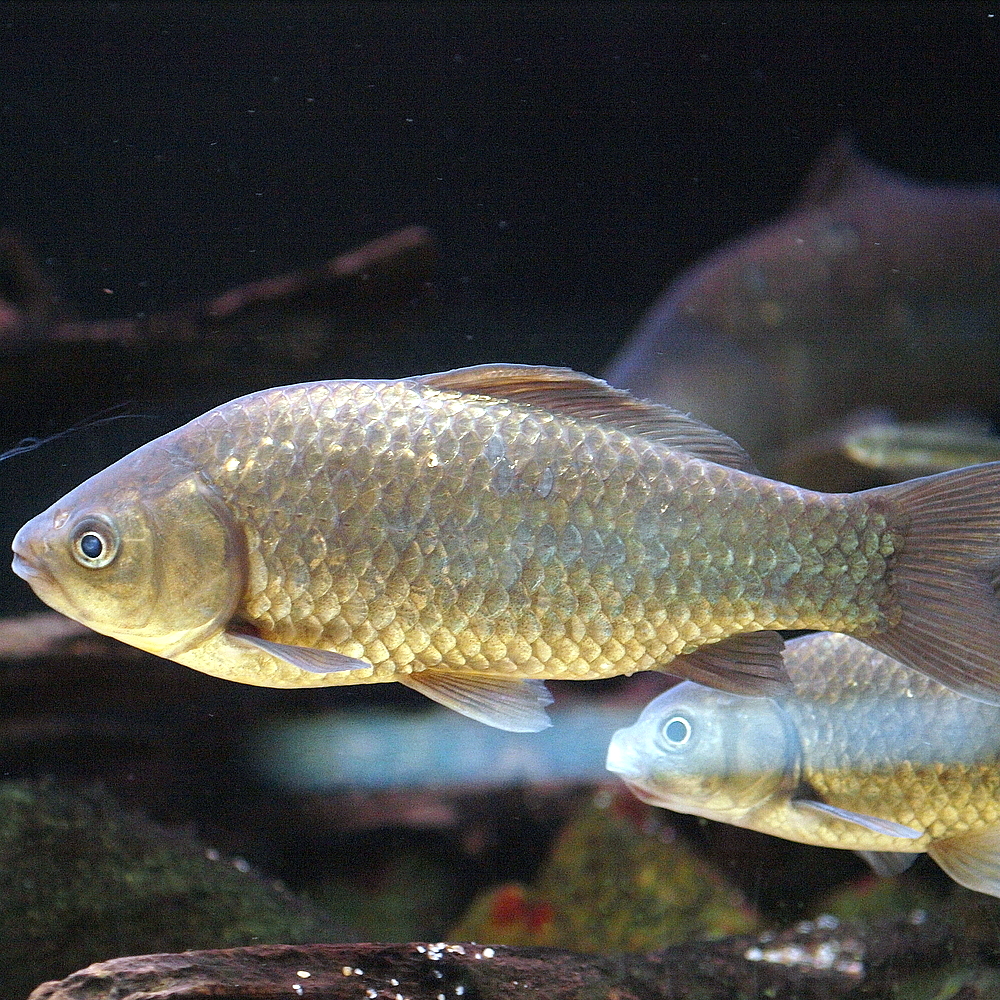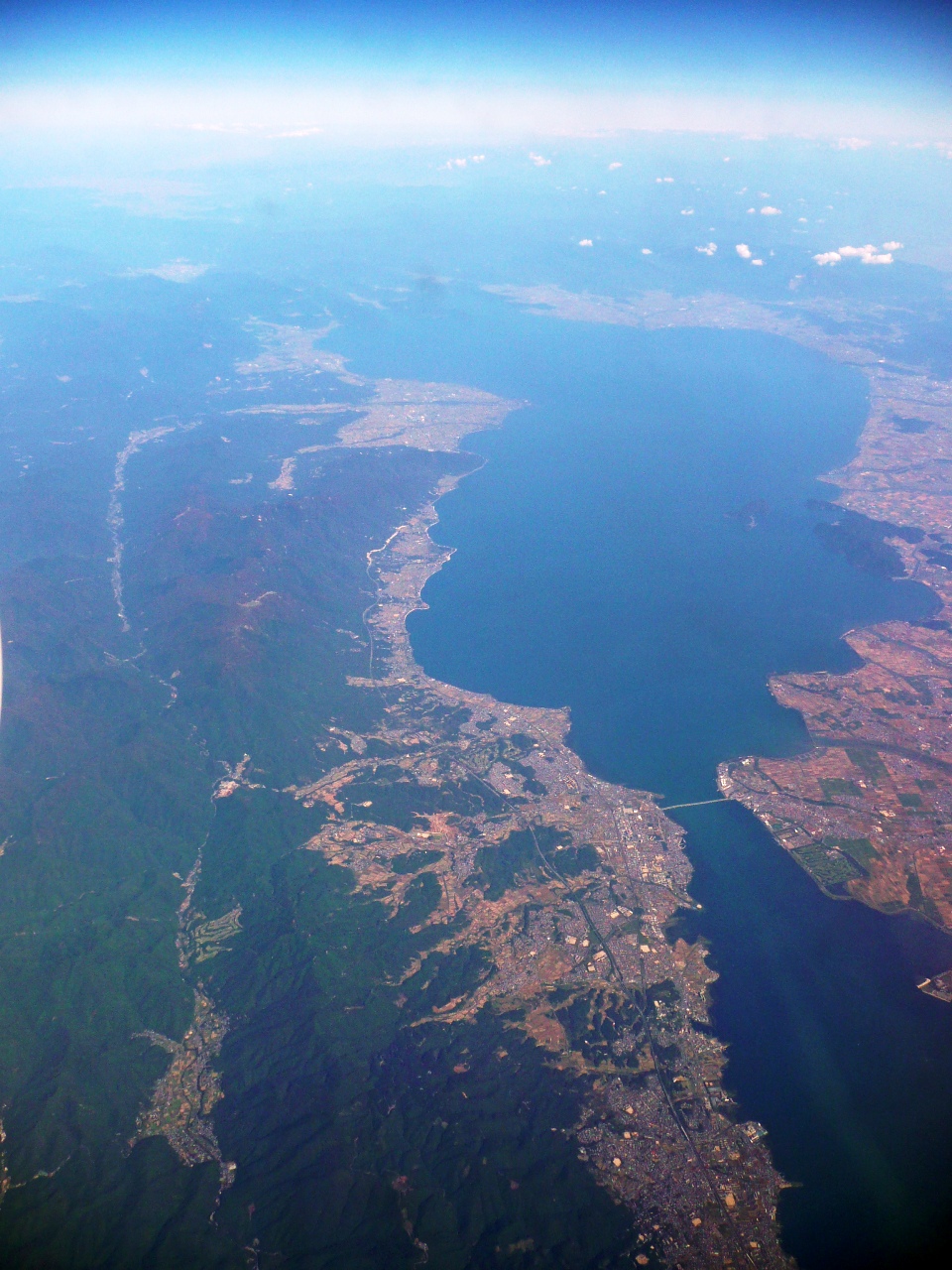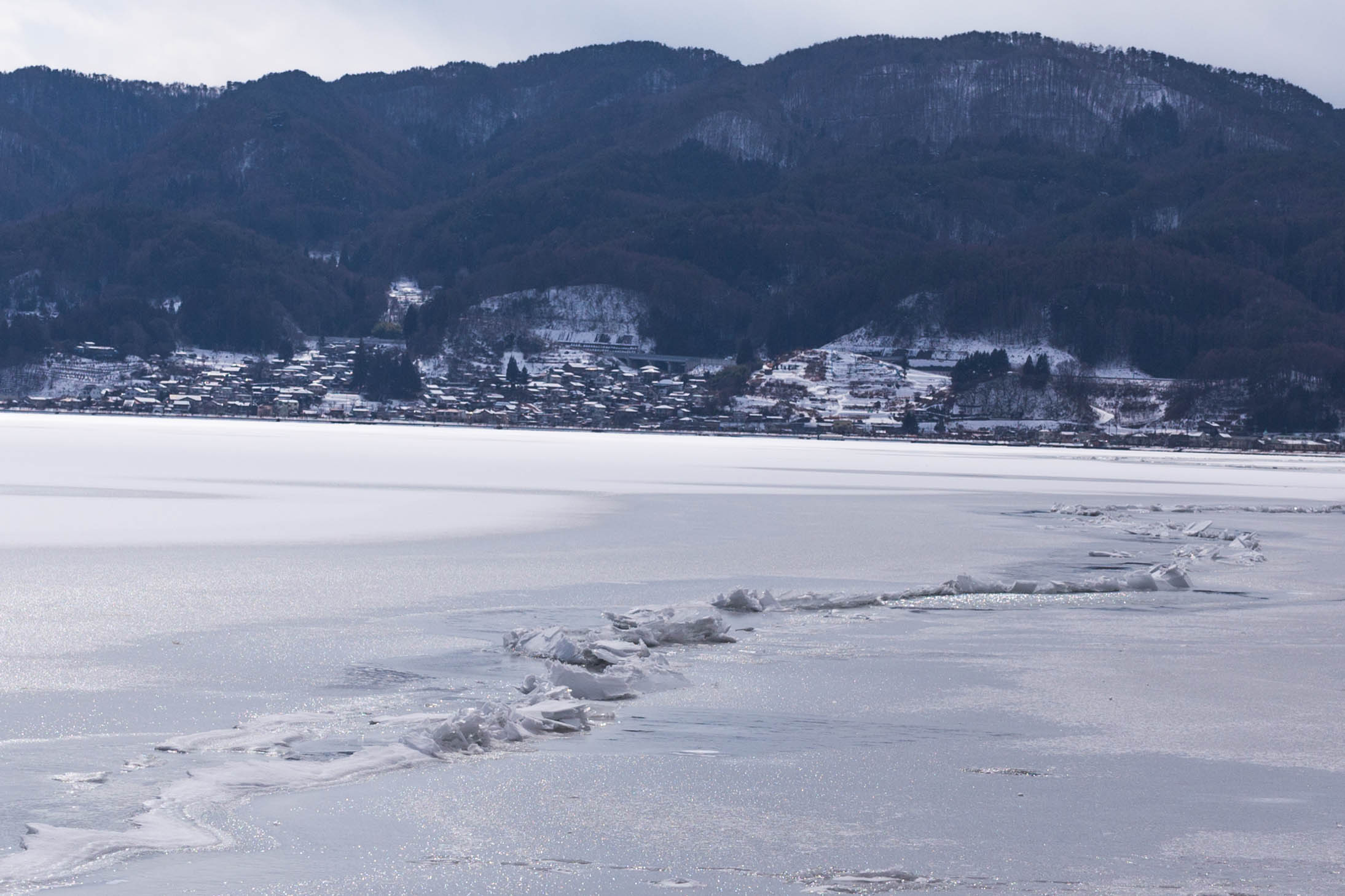|
Nigorobuna
''Nigoro-buna'', sometimes called round crucian carp, is a type of wild goldfish (''Carassius auratus grandoculis'') or related cyprinid (''Carassius buergeri grandoculis'') endemic to Japan. Its habitat is limited to Lake Biwa, its tributaries and distributaries, and irrigation canals, in the Shiga Prefecture (west-central Honshu), northeast of Kyoto. The fish is of culinary importance locally in Shiga Prefecture, where it is used as an ingredient for '' funazushi'', a type of ''narezushi''. The fermented fish is closely packed with rice and salt in tubs. Etymology The Japanese name has been ascribed various etymologies. One has it that it earned the name ''ni-gorō-buna'' ( ja, 似五郎鮒) meaning "gorō-buna's look-alike", because once it attains sizes of approximately 1.2–1.3 shaku (≈feet), it begins to look confusingly similar to the ('' C. cuvieri'', the wild form of the Japanese crucian carp) which is a closely related species that is also endemic to the lake. It ... [...More Info...] [...Related Items...] OR: [Wikipedia] [Google] [Baidu] |
Carassius Cuvieri
The Japanese white crucian carp, also known as Japanese carp, white crucian carp, or gengoro-buna (''Carassius cuvieri''), is a species of freshwater fish in the carp family (family Cyprinidae). It is found in Japan and, as an introduced species, in several other countries in Asia. This fish is closely related to the commonly known goldfish. Description This is a medium fish, growing up to 50 cm, with a broad head and a blunt snout. The lips are fleshy, and lacking barbels. The body is deep and laterally compressed, with a distinctly humped back. The scales are large and cycloid in shape, with a complete lateral line. Serration is present on the last ray of the dorsal and anal fins, and the caudal fin is forked. Taxonomy The Japanese white crucian carp was formerly considered a subspecies of wild goldfish, and was classified as ''C. auratus cuvieri''. It has now been elevated to species rank, however some authors are in disagreement. Genetic studies using mitochondr ... [...More Info...] [...Related Items...] OR: [Wikipedia] [Google] [Baidu] |
Funazushi
The history of began with paddy fields, where fish was fermented with vinegar, salt and rice, after which the rice was discarded. The earliest form of the dish, today referred to as , was created in Japan around the Yayoi period (early Neolithic–early Iron Age). In the Muromachi period (1336–1573), people began to eat the rice as well as the fish. During the Edo period (1603–1867), vinegar rather than fermented rice began to be used. The dish has become a form of food strongly associated with Japanese culture. The inventor of modern sushi is believed to be Hanaya Yohei, who invented nigiri-zushi, a type of sushi most known today, in which seafood is placed on hand-pressed vinegared rice, around 1824 in the Edo period. It was the fast food of the ''chōnin'' class in the Edo period. Early history The earliest form of sushi, a dish today known as , has its probable origin with paddy fields along the Mekong River of what is now south-western China, Myanmar, Laos, and Thailan ... [...More Info...] [...Related Items...] OR: [Wikipedia] [Google] [Baidu] |
Narezushi
is a Japanese dish of prepared , usually with some sugar and salt, accompanied by a variety of , such as seafood, often raw, and vegetables. Styles of sushi and its presentation vary widely, but the one key ingredient is "sushi rice," also referred to as , or . The inventor of modern sushi is believed to be Hanaya Yohei, who invented nigiri-zushi, a type of sushi most known today, in which seafood is placed on hand-pressed vinegared rice, around 1824 in the Edo period (1603–1867). It was the fast food of the '' chōnin'' class in the Edo period. Sushi is traditionally made with medium-grain white rice, though it can be prepared with brown rice or short-grain rice. It is very often prepared with seafood, such as squid, eel, yellowtail, salmon, tuna or imitation crab meat. Many types of sushi are vegetarian. It is often served with , wasabi, and soy sauce. Daikon radish or are popular garnishes for the dish. Sushi is sometimes confused with sashimi, a similar dis ... [...More Info...] [...Related Items...] OR: [Wikipedia] [Google] [Baidu] |
Lake Biwa
is the largest freshwater lake in Japan, located entirely within Shiga Prefecture (west-central Honshu), northeast of the former capital city of Kyoto. Lake Biwa is an ancient lake, over 4 million years old. It is estimated to be the 13th oldest lake in the world. Because of its proximity to Kyoto, references to Lake Biwa appear frequently in Japanese literature, particularly in poetry and in historical accounts of battles. Name The name ''Biwako'' was established in the Edo period. There are various theories about the origin of the name ''Biwako'', but it is generally believed to be so named because of the resemblance of its shape to that of a stringed instrument called the ''biwa''. Kōsō, a learned monk of Enryaku-ji in the 14th century, gave a clue to the origin of the name ''Biwako'' in his writing: "The lake is the Pure land of the goddess Benzaiten because she lives on Chikubu Island and the shape of the lake is similar to that of the ''biwa'', her favorite instrume ... [...More Info...] [...Related Items...] OR: [Wikipedia] [Google] [Baidu] |
Ministry Of The Environment (Japan)
The is a Cabinet-level ministry of the government of Japan responsible for global environmental conservation, pollution control, and nature conservation. The ministry was formed in 2001 from the sub-cabinet level Environmental Agency established in 1971. The Minister of the Environment is a member of the Cabinet of Japan and is chosen by the Prime Minister, usually from among members of the Diet. In March 2006, the then-Minister of the Environment Yuriko Koike, created a ''furoshiki'' cloth to promote its use in the modern world. In August 2011, the Cabinet of Japan approved a plan to establish a new energy watchdog under the Environment Ministry, and the Nuclear Regulation Authority was founded on September 19, 2012. Organization * Minister's Secretariat (大臣官房) * (総合環境政策統括官) * Global Environment Bureau (地球環境局) * Environment Management Bureau (水・大気環境局) * Nature Conservation Bureau (自然環境局) * (環境再生・資源循� ... [...More Info...] [...Related Items...] OR: [Wikipedia] [Google] [Baidu] |
Regional Red List
A Regional Red List is a report of the threatened status of species within a certain country or region. It is based on the IUCN Red List of Threatened Species, an inventory of the conservation status of species on a global scale. Regional Red Lists assess the risk of extinction to species within a political management unit and therefore may feed directly into national and regional planning. This project is coordinated by the Zoological Society of London, the World Conservation Union (IUCN) and partners in national governments, universities and organizations throughout the world. Regional Red Lists may assist countries or regions in: * Determining the conservation status and trends of species * Identifying species or ecosystems under greatest threat * Informing conservation planning and priority setting * Raising awareness of threatened species Assessing extinction risk on a regional scale The IUCN Categories and Criteria were initially designed to assess the conservation s ... [...More Info...] [...Related Items...] OR: [Wikipedia] [Google] [Baidu] |
FishBase
FishBase is a global species database of fish species (specifically finfish). It is the largest and most extensively accessed online database on adult finfish on the web.Marine Fellow: Rainer Froese ''Pew Environment Group''. Over time it has "evolved into a dynamic and versatile ecological tool" that is widely cited in scholarly publications. FishBase provides comprehensive species data, including information on , geographical distribution, and |
Lake Suwa
is a lake in the Kiso Mountains, in the central region of Nagano Prefecture, Japan. Geography The lake is the source of the Tenryū River. It ranks 24th in lake water surface area in Japan. The cities of Suwa and Okaya and the town of Shimosuwa are located on the shores of Lake Suwa. Omiwatari Lake Suwa is the site of a natural phenomenon known as the , large cracks that form in the winter across the surface of the frozen lake. A vertical temperature gradient results in ice pressure ridges forming in the surface ice, reaching heights of or more. Local Shinto tradition holds that the ridges are formed by the gods crossing the lake when traveling between the various buildings of the Suwa Grand Shrine. Folklore says it is the guardian god of Suwa, Takeminakata-no-kami, leaving his sanctuary to meet with his wife, the goddess , joining the opposite bank by walking on frozen water. The record of this crossing is the oldest-known human-observed climate record. This record has ... [...More Info...] [...Related Items...] OR: [Wikipedia] [Google] [Baidu] |
Dorsal (anatomy)
Standard anatomical terms of location are used to unambiguously describe the anatomy of animals, including humans. The terms, typically derived from Latin or Greek roots, describe something in its standard anatomical position. This position provides a definition of what is at the front ("anterior"), behind ("posterior") and so on. As part of defining and describing terms, the body is described through the use of anatomical planes and anatomical axes. The meaning of terms that are used can change depending on whether an organism is bipedal or quadrupedal. Additionally, for some animals such as invertebrates, some terms may not have any meaning at all; for example, an animal that is radially symmetrical will have no anterior surface, but can still have a description that a part is close to the middle ("proximal") or further from the middle ("distal"). International organisations have determined vocabularies that are often used as standard vocabularies for subdisciplines of anatom ... [...More Info...] [...Related Items...] OR: [Wikipedia] [Google] [Baidu] |
Gill Raker
Gill rakers in fish are bony or cartilaginous processes that project from the branchial arch (gill arch) and are involved with suspension feeding tiny prey. They are not to be confused with the gill filaments that compose the fleshy part of the gill used for gas exchange. Rakers are usually present in two rows, projecting from both the anterior and posterior side of each gill arch. Rakers are widely varied in number, spacing, and form. By preventing food particles from exiting the spaces between the gill arches, they enable the retention of food particles in filter feeders. The structure and spacing of gill rakers in fish determines the size of food particles trapped, and correlates with feeding behavior. Fish with densely spaced, elongated, comb-like gill rakers are efficient at filtering tiny prey, whereas carnivores and omnivores often have more widely spaced gill rakers with secondary projections. Because gill raker characters often vary between closely related taxa, they are ... [...More Info...] [...Related Items...] OR: [Wikipedia] [Google] [Baidu] |
Fin Ray
Fins are distinctive anatomical features composed of bony spines or rays protruding from the body of a fish. They are covered with skin and joined together either in a webbed fashion, as seen in most bony fish, or similar to a flipper, as seen in sharks. Apart from the tail or caudal fin, fish fins have no direct connection with the spine and are supported only by muscles. Their principal function is to help the fish swim. Fins located in different places on the fish serve different purposes such as moving forward, turning, keeping an upright position or stopping. Most fish use fins when swimming, flying fish use pectoral fins for gliding, and frogfish use them for crawling. Fins can also be used for other purposes; male sharks and mosquitofish use a modified fin to deliver sperm, thresher sharks use their caudal fin to stun prey, reef stonefish have spines in their dorsal fins that inject venom, anglerfish use the first spine of their dorsal fin like a fishing rod to lur ... [...More Info...] [...Related Items...] OR: [Wikipedia] [Google] [Baidu] |







.png)